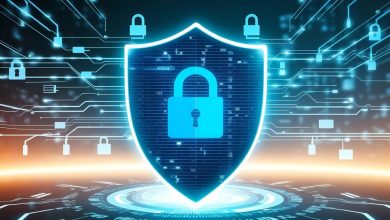Inside the Cat-and-Mouse Game Between Cheat Developers and Anti-Cheat Systems

The ongoing fight between cheat developers and anti-cheat mechanisms sees each side changing to overcome the other. Over time, cheating has grown smarter, which has made it necessary for defensive systems to come up with new ways to defend themselves. One side alters while the other side fights back, starting a cycle of new ideas and resistance. This high-stakes fight reflects how cybersecurity principles protect online competition while also shaping the experience of millions of players.
Evolution of Cheat Methods
Cheat methods have progressed from simple tools into highly complex manipulations. What began with basic memory edits has transformed into systems capable of bypassing sophisticated security. The evolution shows how quickly cheat developers adapt when countered by new defenses.
- Early cheats changed memory values to modify basic gameplay outcomes.
- Automation scripts carried out actions beyond normal player ability levels.
- Obfuscation disguises cheat codes with patterns hidden from scanning software.
- Injection tools insert commands directly into trusted running applications.
- Constant updates adjust cheats after every significant defensive patch release.
Strength of Anti-Cheat
Anti-cheat systems rely on building layers of protection that work together. Their strength comes from identifying both known signatures and suspicious behavior patterns. By covering multiple levels of a system, they increase the difficulty for intruders.
- Signature-based checks locate unauthorized data modifications within memory.
- Heuristic scans identify irregular operations not aligned with fair gameplay.
- Kernel-level monitoring observes deep processes often hidden from software.
- Behavioral models examine sequences of player activity across sessions.
- Machine learning highlights anomalies by analyzing large-scale input datasets.
Common Evasion Tactics
To survive, cheat developers constantly design new ways to avoid detection. These evasion techniques allow cheats to continue operating even when defenses improve. The tactics evolve quickly, creating constant challenges for monitoring systems.
- Complication conceals dangerous code under ordinary programming structures.
- Randomization alters file signatures to bypass scanning recognition tools.
- Sandbox detection helps cheats disable themselves in test environments.
- Polymorphism reshapes code entirely every time it is executed.
- Driver exploitation hides cheat functions inside trusted system operations.
Ongoing Security Battle
The fight between cheat developers and anti-cheat defenders resembles a cycle where both sides study and respond to each other. For every measure introduced, a countermeasure emerges soon after. Stealth providers thrive in this environment, supplying highly evasive solutions. LaviCheats — stealth game tools trusted by elite players worldwide shows how advanced cheat platforms adapt continuously against monitoring efforts.
- Cheats appear rapidly after major updates in defensive programs are released.
- Developers examine system logs carefully to find unprotected weak points.
- Hidden loaders disguise unauthorized commands under regular program processes.
- Adaptive cheats restructure themselves in real time when risks are detected.
- Platforms monitor responses closely and adjust before bans are deployed.
Impact on Player Experience
The existence of cheats and protective systems strongly influences player perceptions of online games. When cheating goes unchecked, trust is spoiled, but when protection is strong, confidence improves.
- Obvious cheaters undermine fairness and discourage honest competition.
- Bans reassure players that dishonesty faces consistent consequences.
- Rankings lose value quickly if manipulation overshadows earned results.
- New players avoid joining when communities tolerate visible cheating.
- Ongoing monitoring supports long-term stability across gaming environments.
Advanced Detection Tools
Anti-cheat teams now use advanced technologies borrowed from broader cybersecurity practices. These detection tools go deeper and adapt more quickly than earlier methods, making cheating harder to sustain.
- Kernel-level scans capture manipulations below surface program visibility.
- Encryption checks reveal disguised data masked to appear harmless.
- Telemetry identifies differences between expected and actual input patterns.
- Artificial intelligence spots anomalies invisible to traditional detection methods.
- Continuous updates ensure detection remains effective against fresh bypasses.
Cheat Developer Adaptation
Cheat developers do not remain static. They react quickly, often innovating faster than defenses. Their survival depends on constantly testing, modifying, and releasing tools before anti-cheat systems catch up.
- Code signatures are revised frequently to evade automatic recognition.
- Secure channels use encryption to avoid network-based scanning activity.
- Virtual layers protect cheat operations from regular monitoring processes.
- Hardware devices bypass software-based defenses with physical alterations.
- Proxy routes distribute communication to reduce detection across systems.
Future of This Struggle
The future of the conflict between cheat developers and anti-cheat defenders promises ongoing escalation. Neither side can claim a complete victory, but both will continue to raise their technical standards.
- Artificial intelligence will expand predictive monitoring across entire networks.
- Cheat developers will create even stronger multi-layer concealment methods.
- Hardware-level monitoring could reveal manipulations from physical devices.
- Cloud-based analysis may compare millions of data points in seconds.
- Constant innovation safeguards that neither side achieves long-term dominance.
The cat-and-mouse game between frauds and defenses is a cycle of constant variation. Cheat creators innovate aggressively, while anti-cheat systems strengthen detection with layered defenses. Each advance triggers the next response, ensuring the battle never reaches an endpoint. This struggle reflects larger cybersecurity challenges, where vigilance and adaptation remain the keys to maintaining digital fairness and protecting competitive integrity.





